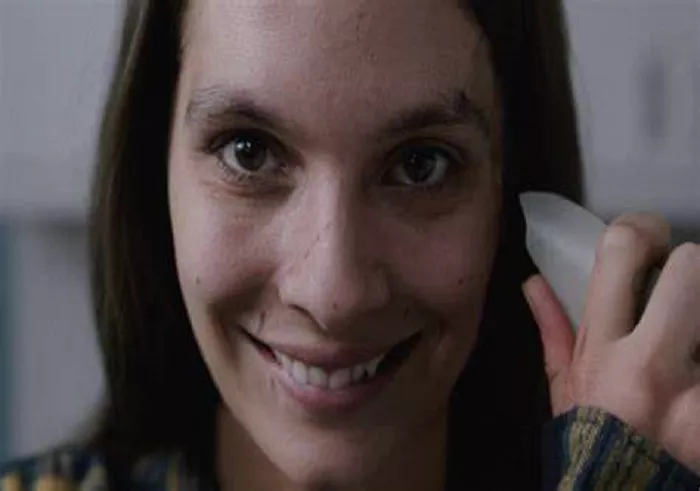Horror movies have always had a special place in cinema, offering audiences an escape into realms of fear and suspense. “Smile,” directed by Parker Finn and released in 2023, quickly became a sensation for its unique take on psychological horror. The film explores themes of trauma, mental health, and the supernatural, all while delivering a chilling narrative that keeps viewers on edge. This article delves into what “Smile” is about, breaking down its plot, characters, and underlying messages to provide a comprehensive understanding of this modern horror gem.
Characters and Their Roles
Rose Cotter: The Protagonist
Rose Cotter serves as the central figure in “Smile.” Her profession as a psychiatrist adds depth to her character, making her struggle more poignant. Rose is initially portrayed as a competent and empathetic doctor, dedicated to helping her patients. However, after witnessing her patient’s suicide, her world starts unraveling. The audience sees Rose grappling not only with external threats but also with her deteriorating mental state.
Supporting Cast
Alongside Rose, there are several supporting characters who contribute to the story’s development. Her mother, played by Laurie Metcalf, provides crucial backstory that sheds light on Rose’s past and her family’s history. Colleagues at the psychiatric hospital offer additional perspectives and sometimes challenge Rose’s perceptions. These interactions help build tension and highlight Rose’s isolation as she faces increasingly bizarre events.
Themes Explored in Smile
Trauma and Mental Health
One of the most prominent themes in “Smile” is trauma and its impact on mental health. Rose’s journey reflects how unresolved traumas can manifest in unexpected ways, affecting one’s perception of reality. The film portrays the challenges faced by individuals dealing with psychological distress, emphasizing the importance of seeking support and acknowledging one’s struggles. Through Rose’s experiences, “Smile” invites viewers to reflect on their own mental well-being and the need for compassionate care.
The Supernatural and Its Consequences
Another key theme is the exploration of the supernatural and its consequences. The mysterious entity that haunts Rose defies conventional logic, blurring the lines between reality and illusion. This aspect of the film taps into universal fears of the unknown and uncontrollable forces beyond human comprehension. “Smile” raises questions about the nature of existence and the limits of scientific understanding, leaving audiences pondering deeper philosophical issues.
Symbolism and Visual Elements
The Grin: A Central Motif
A recurring motif in “Smile” is the grin—a seemingly benign expression that takes on sinister connotations throughout the film. Characters who display this grin often precede horrific acts, creating an unsettling connection between happiness and terror. The grin symbolizes the duality of appearances versus reality, highlighting how things are not always as they seem. This visual cue adds layers of complexity to the narrative, enhancing the film’s atmosphere of unease.
Lighting and Cinematography
The use of lighting and cinematography plays a critical role in setting the tone of “Smile.” Dark, shadowy scenes dominate much of the film, reflecting Rose’s internal turmoil and the ominous presence stalking her. Close-up shots of characters’ faces, particularly their eyes and mouths, intensify emotional moments and heighten the sense of intimacy and vulnerability. The contrast between light and dark areas creates striking visuals that underscore the film’s themes of clarity versus confusion.
Critical Reception and Audience Impact
Mixed Reviews and Controversies
Upon its release, “Smile” received mixed reviews from critics. Some praised its innovative approach to psychological horror and strong performances, especially Sosie Bacon’s portrayal of Rose. Others criticized certain plot elements or found the film too reliant on shock value. Despite the varied opinions, “Smile” resonated strongly with audiences, sparking discussions about its meaning and effectiveness. Social media platforms buzzed with theories and interpretations, contributing to the film’s cultural impact.
Engaging Viewers with Complex Ideas
What sets “Smile” apart is its ability to engage viewers with complex ideas wrapped in a compelling narrative. By blending psychological drama with supernatural elements, the film offers multiple layers for interpretation. It challenges traditional horror tropes and encourages audiences to think critically about the events unfolding on screen. This intellectual engagement enhances the viewing experience, making “Smile” more than just a scare fest; it becomes a thought-provoking exploration of human psychology and the mysteries of life.
Conclusion
In conclusion, “Smile” is a modern horror movie that delves deep into the psyche of its protagonist, exploring themes of trauma, mental health, and the supernatural. Through its intricate plot, well-developed characters, and rich symbolism, the film delivers a haunting tale that lingers long after the credits roll. Whether appreciated for its scares or its deeper meanings, “Smile” stands out as a significant addition to the horror genre, inviting audiences to confront their fears and question the boundaries of reality. As we continue to explore new frontiers in storytelling, films like “Smile” remind us of the power of cinema to evoke emotion, provoke thought, and leave lasting impressions.
Relate topics
9 Best Horror Movies to Watch on Streaming
Who Plays Joker In The New Joker Movie?

